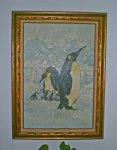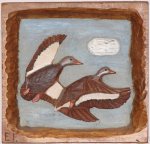Frank Fusco
Member
- Messages
- 12,791
- Location
- Mountain Home, Arkansas
BTW
How many of you are familiar with different sculpting techniques? I mention this because many people think that the usual way to work is direct sculpting, (carving directly from the final material) which is the hardest and more difficult one.
Most famous sculptors in any material, even Michelangelo used the points transfer method using either dividers or a point transferring tool.
If anyone is interested I can share my little knowledge of those, or maybe get some more from any of you.
Your comments are interesting, especially the one about "most famous" really caught my attention. I have a good friend, who happens to live near me, who is a masters-master at woodcarving. He is so skilled that years ago he stopped entering competitions because he always won and took the fun out of the 'competing' part. He has been a judge and teacher for many years. He travels the country doing this. Good guy too.
I called to ask him how he creates a new carving. He answered that only "sometimes" does he do a pre-sculpting model with transfer points, dividers and etc. But usually he will copy with only visual references. However, he understands that he is unusually blessed with visual abilities that are above what most of us have. He can create from a block of wood without any model although he does use them for inspiration.
His name is Len Dillon. Here is his web site: http://www.diamondd.org/index.html






